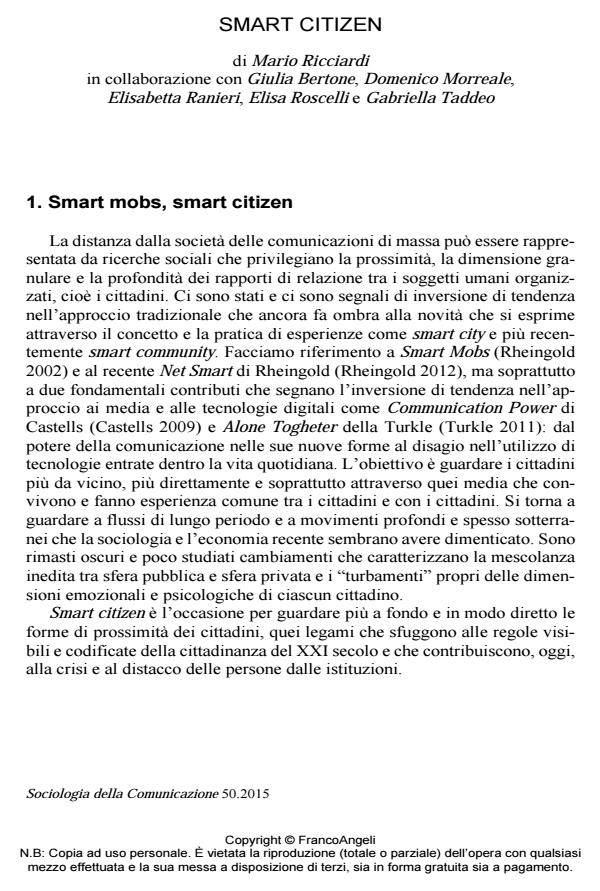Smart citizen
Titolo Rivista SOCIOLOGIA DELLA COMUNICAZIONE
Autori/Curatori Giulia Bertone, Domenico Morreale, Elisabetta Ranieri, Elisa Roscelli, Gabriella Taddeo, Mario Ricciardi
Anno di pubblicazione 2016 Fascicolo 2015/50
Lingua Italiano Numero pagine 14 P. 149-162 Dimensione file 237 KB
DOI 10.3280/SC2015-050015
Il DOI è il codice a barre della proprietà intellettuale: per saperne di più
clicca qui
Qui sotto puoi vedere in anteprima la prima pagina di questo articolo.
Se questo articolo ti interessa, lo puoi acquistare (e scaricare in formato pdf) seguendo le facili indicazioni per acquistare il download credit. Acquista Download Credits per scaricare questo Articolo in formato PDF

FrancoAngeli è membro della Publishers International Linking Association, Inc (PILA)associazione indipendente e non profit per facilitare (attraverso i servizi tecnologici implementati da CrossRef.org) l’accesso degli studiosi ai contenuti digitali nelle pubblicazioni professionali e scientifiche
The essay reflects on citizens’ proximity mediated by personal and community technologies. Once distinct technologies, now in an unprecedented mix, that creates a space and a time that are parallel and interfering, generated by users themselves. A third channel that goes beyond private communication, a non-public sociability but communitybased, characterized by personal and informal exchanges. The essay presents the project In Media Loci, which focused on two fields very representatives for Italy: the network of small towns scattered throughout the territory and cultural heritage, investigating the relationship between local communities and the new digital spaces that locative technologies are defining.
Parole chiave:Smart citizen, smart communities; outsiders; locative media; augmented spaces; cultural heritage
- Conceptualizing smart citizen: relationships and reciprocity with smart government Muhammad Younus, Achmad Nurmandi, Suswanta Suswanta, Wahdania Suardi, in Transforming Government: People, Process and Policy /2024 pp.71
DOI: 10.1108/TG-02-2023-0016
Giulia Bertone, Domenico Morreale, Elisabetta Ranieri, Elisa Roscelli, Gabriella Taddeo, Mario Ricciardi, Smart citizen in "SOCIOLOGIA DELLA COMUNICAZIONE " 50/2015, pp 149-162, DOI: 10.3280/SC2015-050015